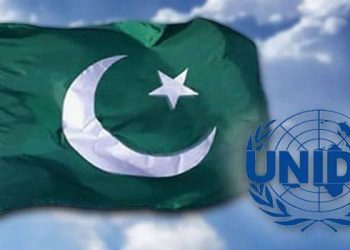Education is a child’s fundamental right. Even in times of conflict, wars, natural disasters and all kinds of epidemics temporary learning opportunities are established as part of emergency respite to ensure continued learning support. World Education Day occurs in the wake of the coronavirus epidemic that causes a universal learning disruption of unprecedented scale and harshness.
The closure of educational institutes and other learning organizations, as well as the disruption of several literacies and lifelong learning programs, has affected the lives of 1.6 billion students in over 190 countries across the world.
Education and COVID-19 pandemic
According to a report issued by UNESCO, an estimate of 87 percent of the student population in 165 countries is facing the closure of educational institutions due to COVID-19. Furthermore, around 1.5 billion students across the globe are unable to attend educational institutions due to the steps taken to limit the spread of the virus.
The report further stated that 1,524,648,768 (87.1% of total enrolled learners) are affected learners around the world.
Breakdown number of student affectees in Pakistan
Pakistan has an estimated more than 21.8 million children from 5-16 outside of the educational institutions. While the ongoing coronavirus outbreak and consequent school closures have resulted in millions more deprived of learning opportunities.
In Pakistan, the number of affected learners or students stands at 46,803,407 reported figures. A further breakdown of the number of student affectees at the pre-primary level is 8,636,383, at secondary of 13,357,618 and at the tertiary level of about 1,878,101. However, this is not the first time that Pakistan has practiced the closure of schools. Schools on a provincial level were previously forced shut due to smog and terrorism that gripped most parts of Pakistan.
Pakistan’s literacy rate
The country’s overall literacy rate remains static at 58 percent with a literacy rate of males 70 percent and 48 percent of females, as due to the Population and Housing Census, the Pakistan Social and Living Standards Measurement was not carried out for 2017-18.
According to the Pakistan Economic Survey, 2017-2018, the literacy rate for the entire Pakistan, which includes ten years old and above is 58 percent. The national net enrollment for primary level for overall Pakistan stood at 54 percent while Punjab leading the rest with 59 percent, followed by Khyber Pakhtunkhwa with 53, Sindh by 48 percent and Balochistan 33 percent.
Similarly, the gross enrollment rate for Pakistan is 87 percent and again Punjab in the lead with 93 percent, Khyber Pakhtunkhwa 88 percent, Sindh 78 percent and Balochistan 60 percent. The gross enrollment for males is 94 percent and 78 percent for females.
Education Budget in Pakistan
The government has allocated Rs. 83.3 billion for Education Affairs and Services in the federal budget for 2020–21 against the revised allocation of Rs. 81.2 billion for the ongoing fiscal year, showing an imperceptible rise of around 2.5%.
Pakistan’s public expenditure on education as a percentage of GDP is estimated at 2.3% in the fiscal year 2019-20, which is the lowest in the region. Compared to international benchmarks, the allocated budget for education is the lowest as of the agreed targets of 15-20% of the total budget and 4% of the GDP.
With the achievement of Sustainable Development Goals (SDGs) by 2030 insight, it is important to note the challenges of limited public financing for education and its efficacy. The government has reserved Rs. 2.931 billion for pre-Primary & Primary Education Affairs for 2020-2 against Rs. 2.83 billion for 2019-20.
Rs. 7.344 billion reserved for Secondary Education Affairs & Services for 2020-21 against Rs. 6.718 billion for 2019-20, Rs. 1.237 billion for administration against Rs. 1.407 billion for 2019-20 which was later amended to Rs. 727 million.
After analyzing the budget it projected that Pakistan has not demonstrated any progress in main educational indicators, such as literacy rate, gross enrolment ratio, and expenditure on education, as compared to the adjoining regional territories.
Steps essential for quality education
Pakistan continues to resolve several of its problems with temporary solutions. Closure of schools during smog should have been taken as a test to cope with uncertain circumstances or natural calamities that may force them to halt access to education. So, Pakistan must work to digitize its education system while also increasing its internet accessibility.
Although schools and colleges promoted all students to the next grades this too is a temporary fix to a problem that is bound to disturb the entire academic calendar, yet the only decent compensation. Moreover, In order to curb such problems in the future, Pakistan must modernize the means of education and access to technology, including the internet, in the most far off places of the country.
Therefore, education being predominantly a provincial subject, the burden of the responsibility to rectify the state of education lies mainly on the federal government. The country cannot defeat its education issues without securing at least 12-years of education for every boy and girl in the country. By allocating at least 8 percent of the GDP to this sector Pakistan can then pledge the development of a structured and better infrastructure of educational policies.
To avoid these children from greater learning losses we must prepare for the challenges. We must take into account the factors and elements that rob young children from marginalized communities of their right to education. It is time to open our eyes and recognize that without quality education for all, we as a nation will always lag behind, despite the ‘potential’ we may have.


































